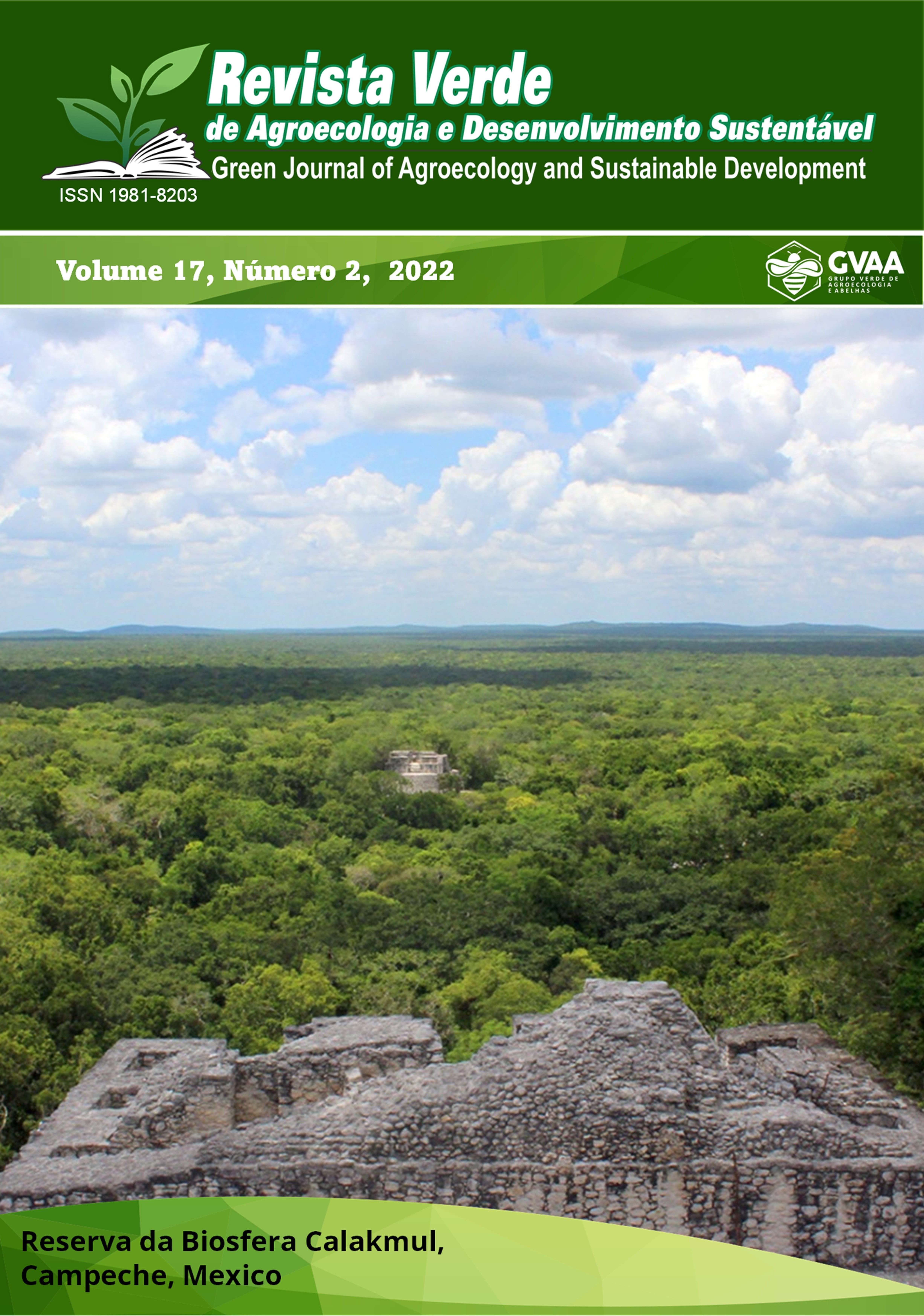Attractive solutions and traps for catching Musca domestica L. 1758 (Diptera: Muscidae)
DOI:
https://doi.org/10.18378/rvads.v17i2.9148Keywords:
Vector insects, Food attractions, Alternative controlAbstract
The house fly Musca domestica L.,1758 (Diptera: Muscidae) is a vector of several pathogens for humans and animals. The control flies in homes and industries generally takes place through chemical products. However, the capture of the se insects can be performed using diferente methods, including traps containing food attractants. Thus, the objective of this study was to evaluate the use of attractive solutions and the developmento fartisantraps for the capture of M. domestica as a way to reduce the use of insecticides. Four solutions were tested as attractants for feeding house flies: brown sugar solution (10%); mango juice (30%), guavajuice (30%) and pine aple juice (30%),10% of the solution with brown sugar was added to each juice; and five sampling times: to the 4 days of experiment, 8 days of experiment, 12 days of experiment, 16 days of experiment and to the 20 days of experiment. The experiment design adopted was a randomized block design, with treat ments arranged in a 4 x 5 factorial scheme, with four replications. The results of the present study allow us to infer that artisanal traps containing food solutions with brown sugar (10%) are the most effective in capturing M. domestica, however, guava and pineapple juices are not different in attractiveness.
Downloads
References
AGUIAR-MENEZES, E. L., SOUZA, J. F.; SOUZA, S. A. S.; LEAL, M. R.; COSTA, J. R.; MENEZES, E.B. Armadilha PET para captura de adultos de moscas-das-frutas em pomares comerciais e domésticos. Rio de Janeiro, Seropédica: Embrapa Agrobiologia (Circular Técnica, 16), 8p., 2006.
AZEVEDO, F. R.; GURGEL, L. S.; SANTOS, M. L. L.; SILVA, F. B.; MOURA, M. A. R.; NERE, D. R. Eficácia de armadilhas e atrativos alimentares alternativos na captura de moscas-das- frutas em pomar de goiaba. Arquivos do Instituto Biológico, v.79, n.3, p.343-352, 2012.
CARVALHO, C. J. B.; RAFAEL, J. A.; COURI, M. S.; SILVA, V. C. ; RAFAEL, J. A.; MELO, G. A. R.; CARVALHO, C. J. B.; CASARI, S. A.; CONSTANTINO, R. Insetos do Brasil: Diversidade e Taxonomia. Holos Editora Ltda, 2012, 810p.
FERREIRA, D. F. SISVAR: A guide for its bootstrap procedures in multiplecomparisons. Ciência e Agrotecnologia, v.38, n.2, p.109-112, 2014. https://doi.org/10.1590/S1413-70542014000200001.
GOMES, P. M. S.; SANTOS, A. M. M. Moscas sinantrópicas nocivas, um desafio atual: Musca domestica L. (Muscidae) e Chrysomya megacephala (Fabricius) (Calliphoridae). Revista SUSTINERE, v.3, n.2, p.89-106, 2015. http://dx.doi.org/10.12957/sustinere.2015.20002.
IBGE - Instituto Brasileiro de Geografia e Estatística. Censo demográfico. 2010. Disponível em: <http://cod.ibge.gov.br/EH5>. Acessado em: 22 de maio de 2021.
IQBAL, W.; MALIK, M. F.; SARWAR, M. K.; AZAM, I.; IRAM, M.; RASHDA, A. Role of housefly (Musca domestica, Diptera; Muscidae) as a disease vector. J. Entomol. Zoo. Stud, v.2, p. 159-163, 2014.
LEMOS, R. N. S.; SILVA, C. M. C.; ARAÚJO, J. R. G.; COSTA, L. J. M. P.; SALLES, J. R. J. Eficiência de substâncias atrativas na captura de moscas-das-frutas (Diptera: Tephritidae) em goiabeiras no município de Itapecuru-Mirim (MA). Revista Brasileira de Fruticultura, v.24, n.3, p.687-689, 2002. https://doi.org/10.1590/S0100-29452002000300029.
LORENZATO, D. Eficiência de frascos e atrativos no monitoramento e combate da moscas do gênero Anastrepha e Ceratitis capitata. Agronomia Sulriograndense, v.20, n.2, p.45-62, 1984.
NAKANO, O.; SILVEIRA NETO, S.; ZUCCHI, R. A. Entomologia econômica. Piracicaba: Ceres, 314p., 1981.
NASCIMENTO, A. S.; CARVALHO, R. S. Pragas da mangueira. In: SOBRINHO, R. B.; CARDOSO, J. E.; FREIRE, F. C. O. (Eds.). Pragas de fruteiras tropicais de importância agroindustrial. Brasília: EMBRAPA/SPI, p.155-167, 1998.
NASCIMENTO, E.; AMBROGI, B. G.; SOUSA-SOUTO, L.; VILAS-BÔAS, M.; UCHÔA, M. Efeito do envelhecimento de isca na captura de moscas (Diptera: Brachycera) em área de Caatinga. EntomoBrasilis, v.7, n.1, p.1-4, 2014. https://doi.org/10.12741/ebrasilis.v7i1.327.
PROCTOR, M.; YEO, P.; LACK, A. The natural history of pollination. The Bath Press, London. 479 p., 1996.
TEIXEIRA, A. F. M.; AMARO FILHO, A. A.; QUINTAES, B. R.; SANTOS, E. C. L.; SURLIUGA, G. C. Controle de mosca doméstica em área de disposição de resíduos sólidos no Brasil. Engenharia Sanitaria e Ambiental, v.13, n.4, p.365-370, 2008.
VELOSO, V. R. S.; FERNANDES, P. M.; ROCHA, M. R.; QUEIROZ, M. V.; SILVA, R. M. R. Armadilha para monitoramento e controle das moscas-das-frutas Anastrepha spp. e Ceratitis capitata (Wied.). Anais da Sociedade Entomológica do Brasil, v.23, n.3, p.487-493, 1994. https://doi.org/10.37486/0301-8059.v23i3.973.















